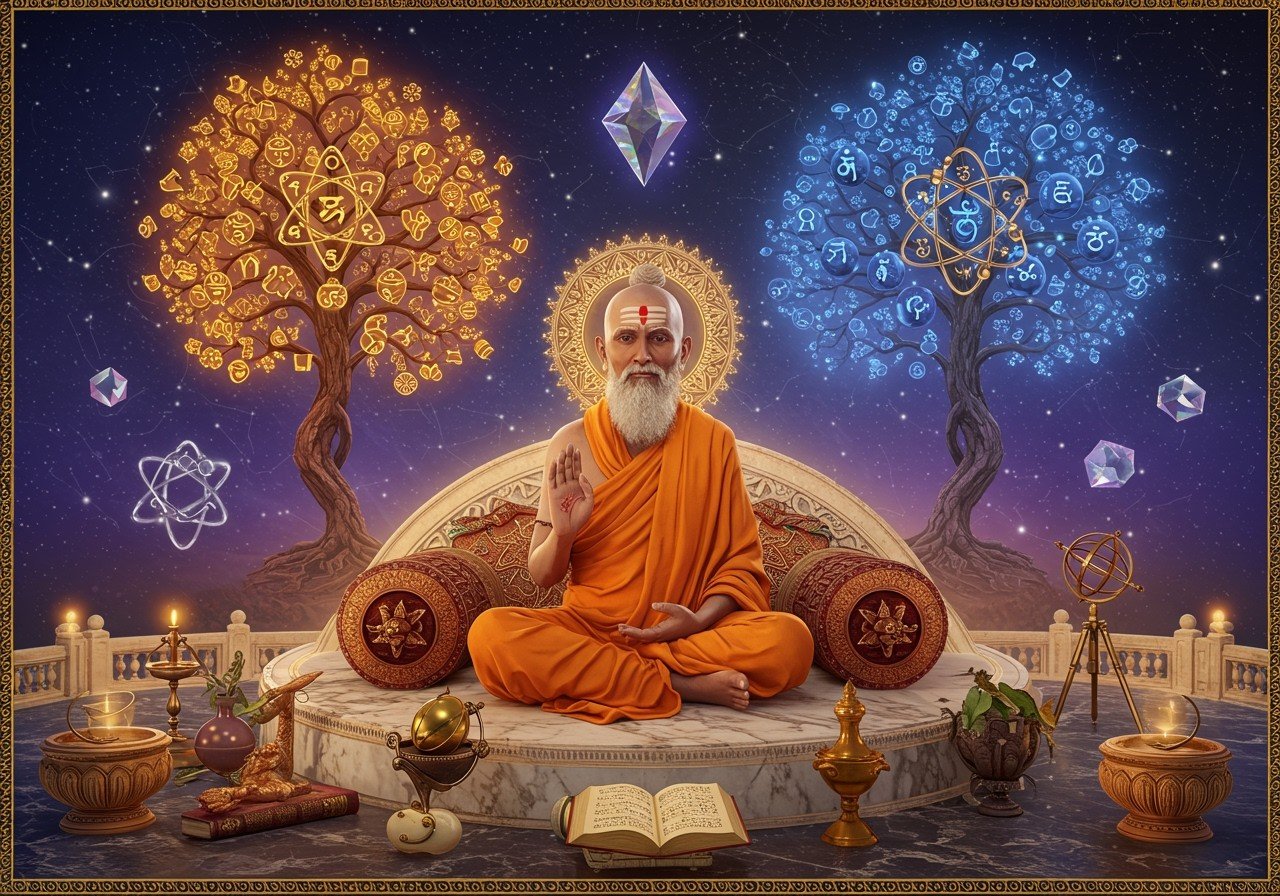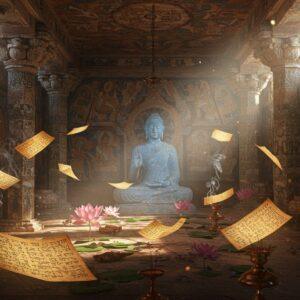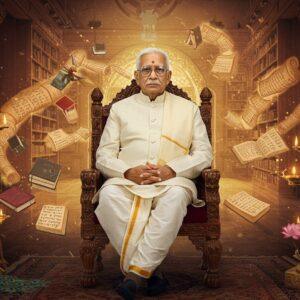Exploring Nyaya and Vaisheshika: Cornerstones of Indian Logic and Physics

Indian philosophy boasts a rich tradition of logical and physical inquiry. Among its six classical schools, Nyaya and Vaisheshika stand out, offering profound insights into logic, epistemology, and metaphysics. These intertwined systems explore how we acquire knowledge and the fundamental nature of reality. They remain relevant today for those seeking a deeper understanding of Indian thought and its enduring legacy.
Delving into Nyaya: The Science of Reasoning
Nyaya, meaning “logic” or “right,” focuses on the process of acquiring valid knowledge (pramana). It identifies four primary sources:
- Perception: Knowledge gained directly through our senses. This involves experiencing the world through sight, sound, touch, taste, and smell. Think of seeing a vibrant flower and recognizing its color and shape.
- Inference: Knowledge derived through reasoning. This involves drawing conclusions based on evidence and logic. For example, seeing smoke and inferring the presence of fire.
- Comparison: Understanding something new by comparing it to something familiar. This uses analogy to bridge understanding. Imagine learning about a new fruit by comparing its taste and texture to a known fruit.
- Testimony: Accepting knowledge from reliable sources, such as scriptures, experts, or trusted individuals. This recognizes the value of learning from others with established expertise.
The Nyaya Sutras, attributed to Gautama, provide a foundational text for this school. They delve into the intricacies of logical debate, outlining techniques like Katha (thesis and counter-thesis with evidence), Jalpa (where equivocation is allowed), and Vitanda (refutation without proposing a counter-thesis). These methods have shaped not only philosophical discourse but also legal arguments in classical India. Nyaya’s emphasis on direct realism asserts that the world we perceive through our senses is a true representation of reality.
Explore our collection of holy books and sacred texts to deepen your understanding of Nyaya and other Indian philosophical traditions.
Unveiling Vaisheshika: The Physics of Reality
Vaisheshika delves into the metaphysical nature of reality, proposing an early form of atomism. Kanada, the founder, posited that everything is composed of indivisible, eternal entities called atoms (anu). These atoms combine to form the complex substances we perceive in the world.
Vaisheshika categorizes reality into seven fundamental components (padarthas):
- Substance: The fundamental building blocks of existence. Earth, water, light, air, ether, time, space, self (atman), and mind (manas) are considered to be nine kinds of substances.
- Quality: Attributes of substances. Color, taste, smell, and touch help differentiate substances.
- Activity: Movement or action inhering in substances, essential for change and interaction.
- Generality: Shared characteristics between entities. The “cowness” of all cows signifies a universal trait.
- Particularity: That which distinguishes one entity from another of the same kind. What sets one particular cow apart from all the rest.
- Inherence: The relationship between a substance and its qualities. How color “belongs to” a particular flower.
- Non-existence: The absence of something. This is the category that represents absence or non-being, contrasting with the existence of the other categories.
Kanada’s atomism, with its emphasis on Padartha (substance), Guna (properties), and Kriya (motion), resonates with modern physics in describing the properties of matter based on atomic structure and behavior. Explore our collection of Pooja Samagri, including traditional copper and brass items, which align with Vaisheshika’s focus on material elements.
Prashastapada: Bridging Logic and Metaphysics
Prashastapada played a crucial role in synthesizing Nyaya and Vaisheshika. His seminal work, Padartha Dharma Sangraha, expanded on Vaisheshika’s framework by integrating Nyaya’s logical methodologies. This created a more comprehensive system, strengthening the connection between the two schools.
Convergences and Divergences
While Nyaya and Vaisheshika share common ground, they also exhibit distinct approaches. Both acknowledge multiple valid sources of knowledge and conceive reality as composed of discrete elements. However, Nyaya leans towards logical inference for understanding causality, whereas Vaisheshika emphasizes material causes. These nuanced differences highlight the rich diversity within Indian philosophical thought.
Lasting Impact and Modern Relevance
The combined influence of Nyaya-Vaisheshika has left an indelible mark on Indian philosophy, stimulating intellectual discourse and shaping subsequent schools of thought like Buddhism and Jainism. Their emphasis on logic and scientific inquiry continues to inspire modern scholars, fostering a deeper appreciation for the intersections of traditional wisdom and contemporary thought.
Connecting with Nyaya and Vaisheshika through Poojn.in
At Poojn.in, we offer a wide selection of products that can enhance your exploration of Indian philosophy. Consider these items for your studies:
- Holy Books and Sacred Texts: Delve deeper into Nyaya and Vaisheshika with authentic texts and commentaries.
- Clay Items: Symbolically connect with the earth element central to Vaisheshika’s metaphysics.
- Meditation Supplies: Enhance your contemplative practice as you reflect on these profound philosophical concepts.
Visit Poojn.in to discover a wide array of products that support your journey into the rich world of Indian philosophy.
Frequently Asked Questions about Nyaya and Vaisheshika
What is the core focus of Nyaya philosophy? Nyaya primarily focuses on epistemology, exploring how we gain valid knowledge and distinguish it from false beliefs. It emphasizes logic and reasoning as essential tools for understanding the world.
How does Vaisheshika complement Nyaya? Vaisheshika complements Nyaya by providing a metaphysical framework. It categorizes reality into different components, offering a structured way to understand the universe and its building blocks, including atoms.
What is Prashastapada’s key contribution? Prashastapada’s work, Padartha Dharma Sangraha, systematically integrates Nyaya’s logic with Vaisheshika’s metaphysics. This integration provides a more comprehensive and unified philosophical system.
How do these philosophies remain relevant today? Nyaya and Vaisheshika’s emphasis on logical reasoning and scientific inquiry continues to be relevant. They promote critical thinking, which is essential for navigating the complexities of the modern world.
Where can I find resources to learn more? Poojn.in offers a curated selection of holy books and sacred texts to help you deepen your understanding of Nyaya and Vaisheshika, along with other Indian philosophical traditions.


